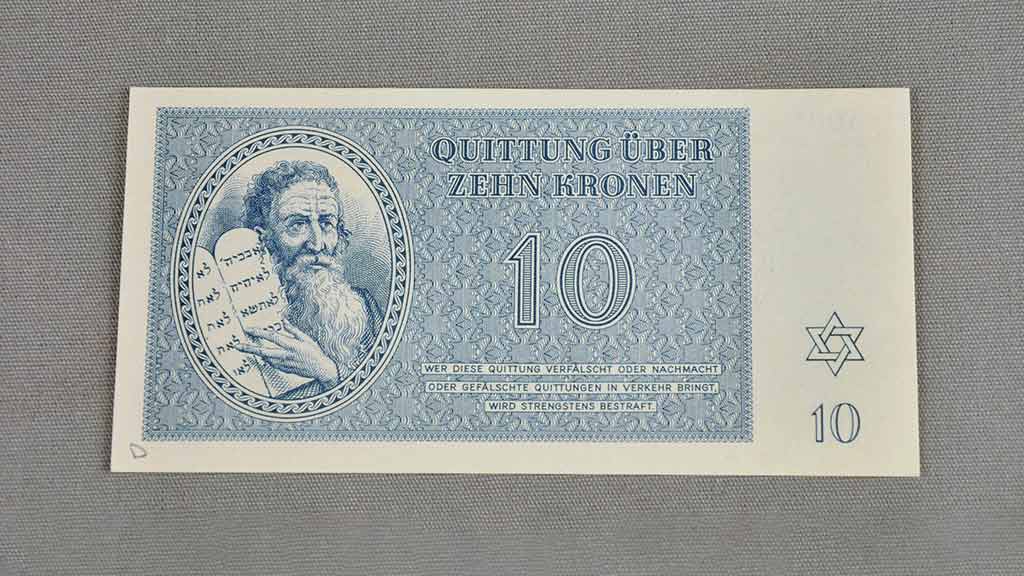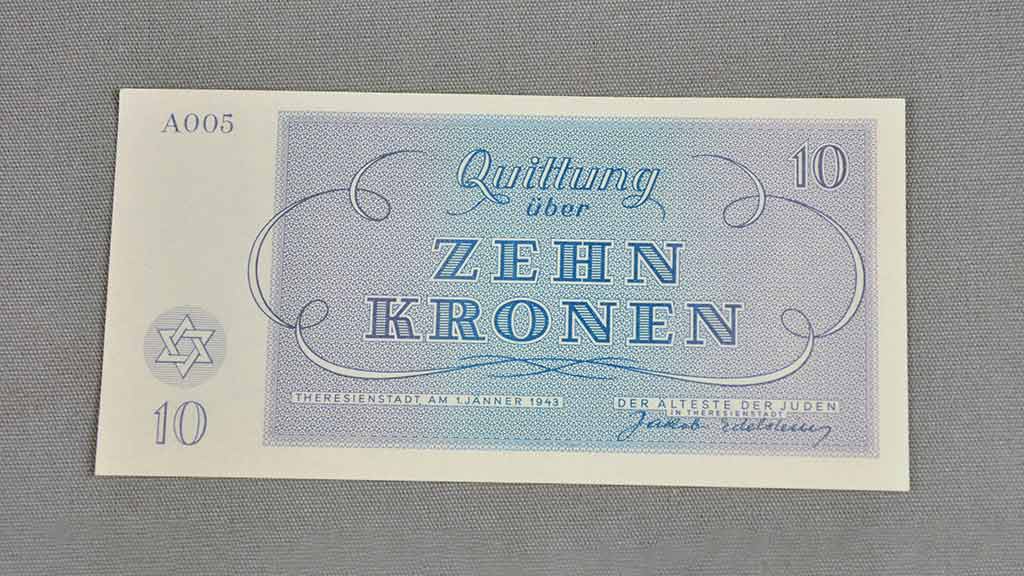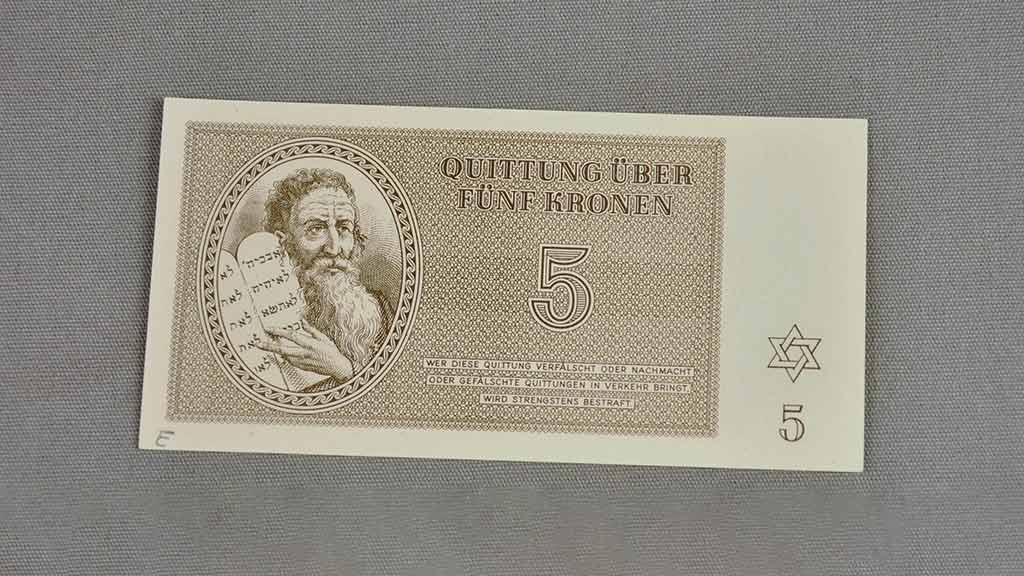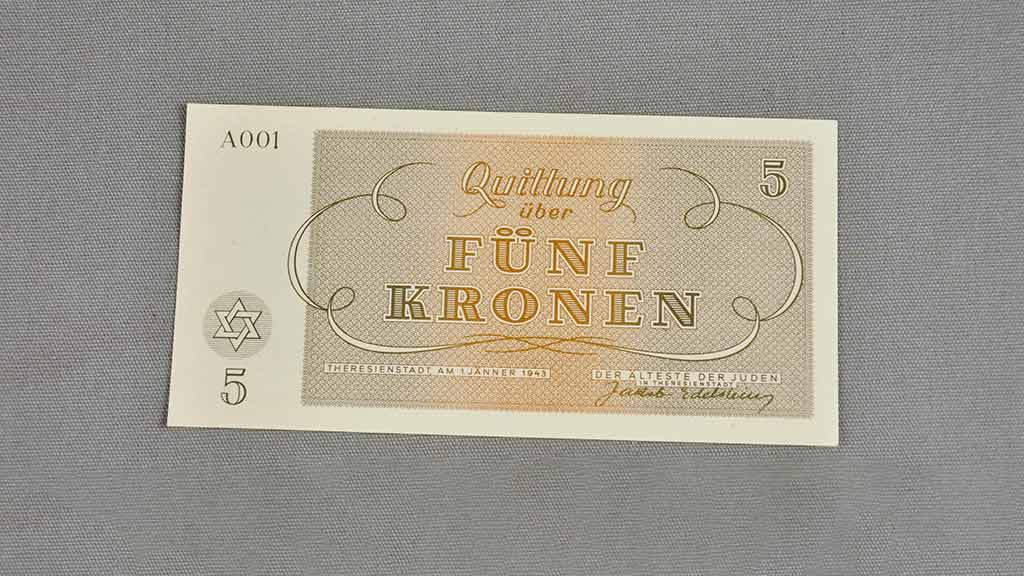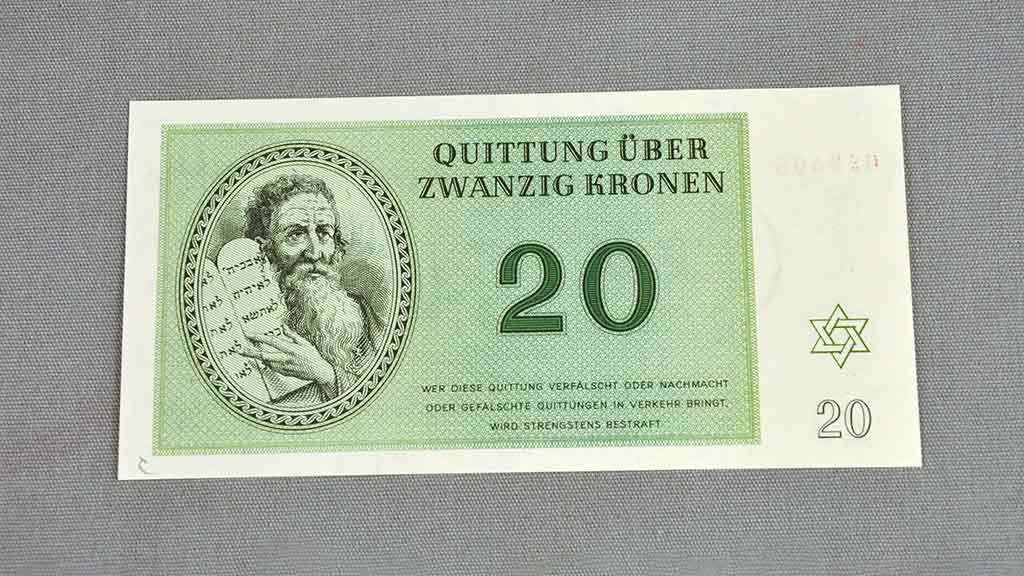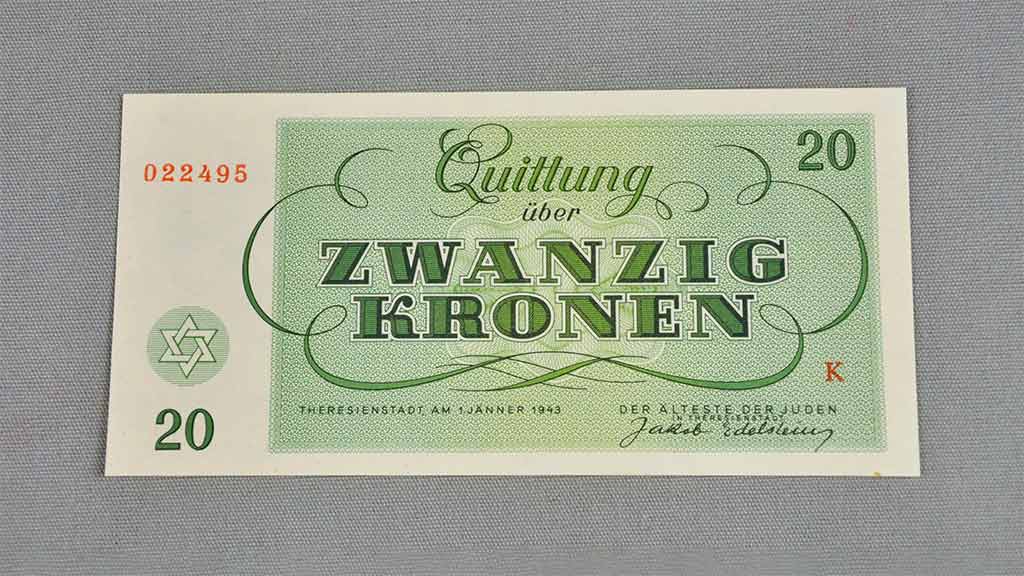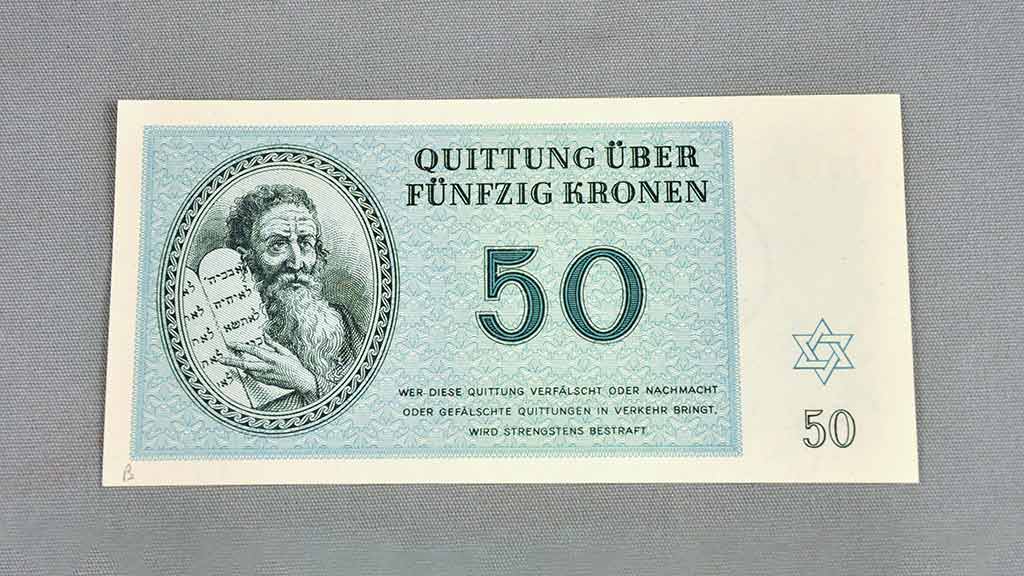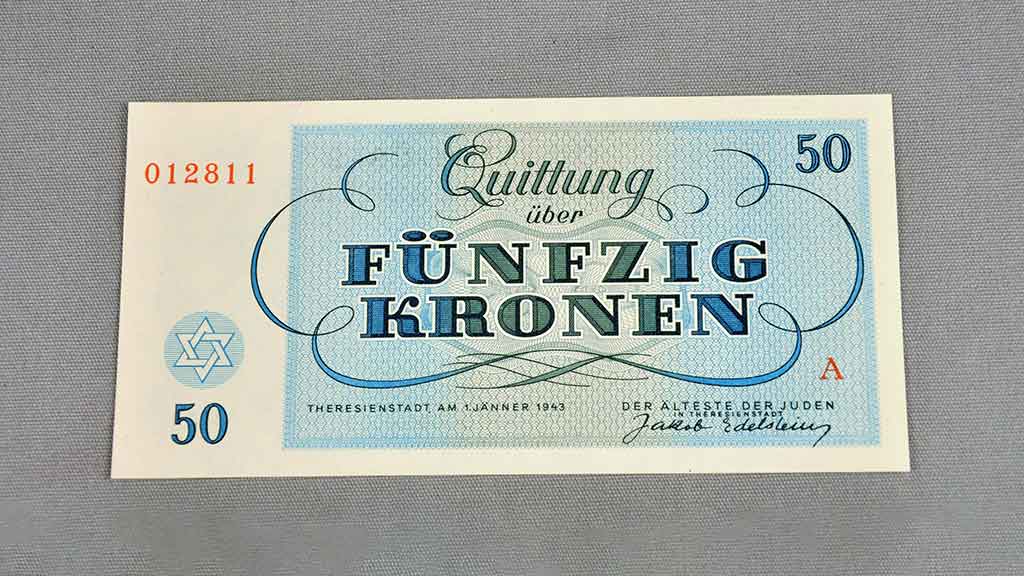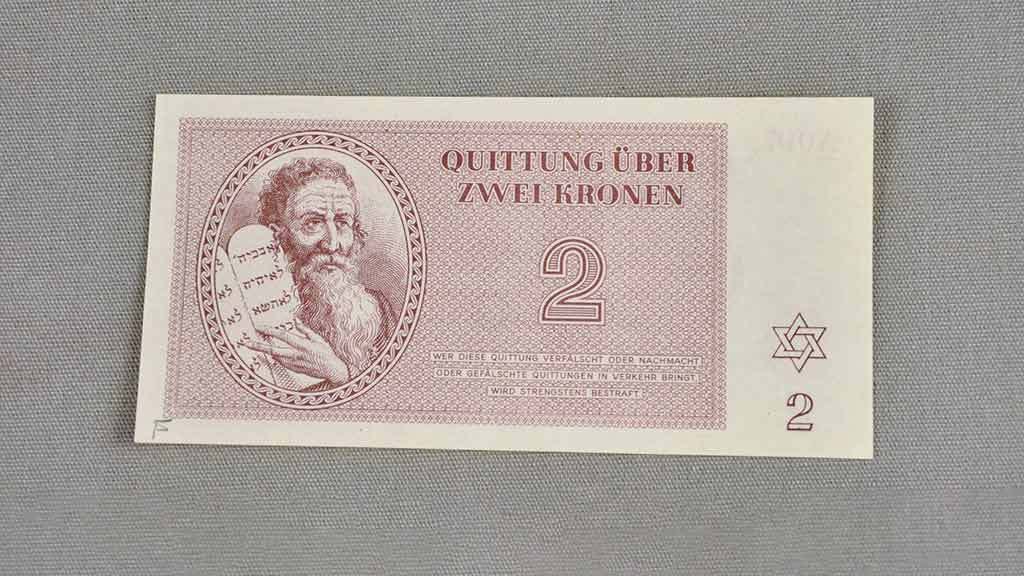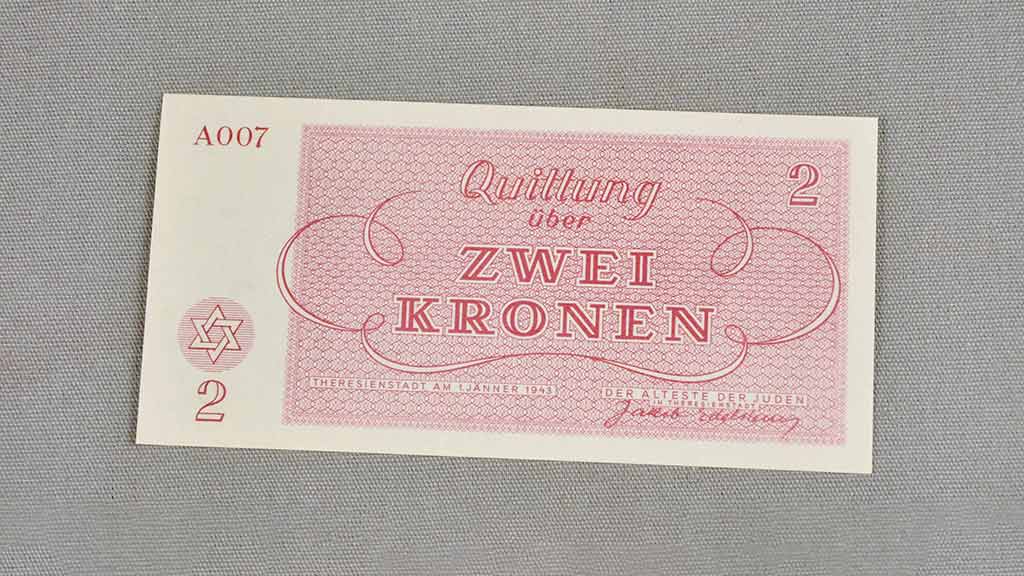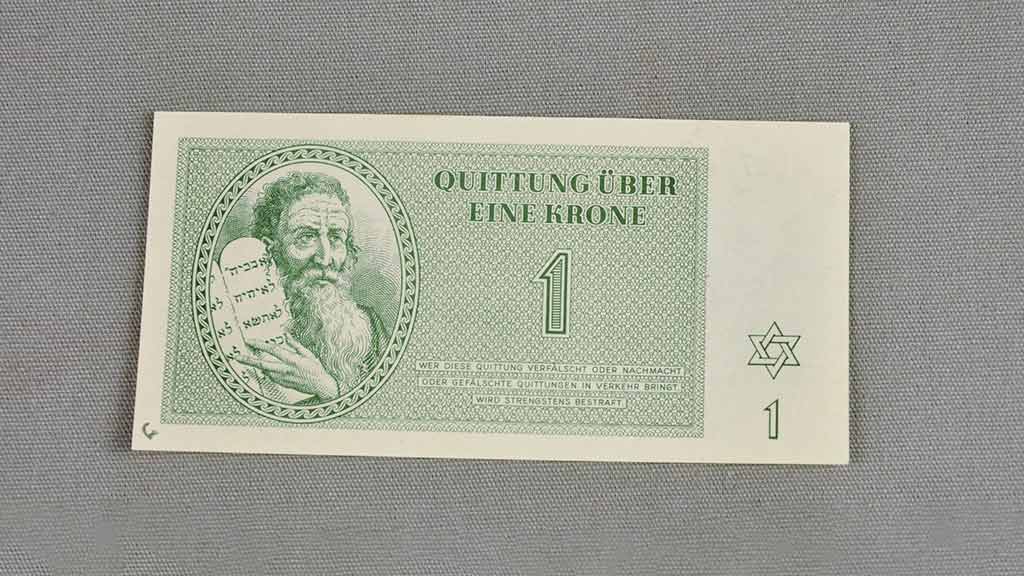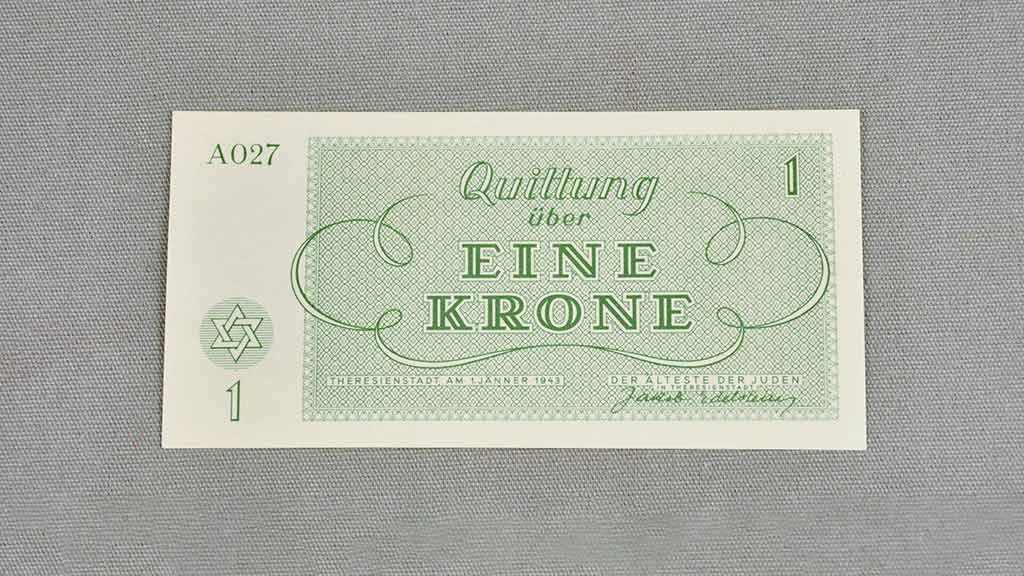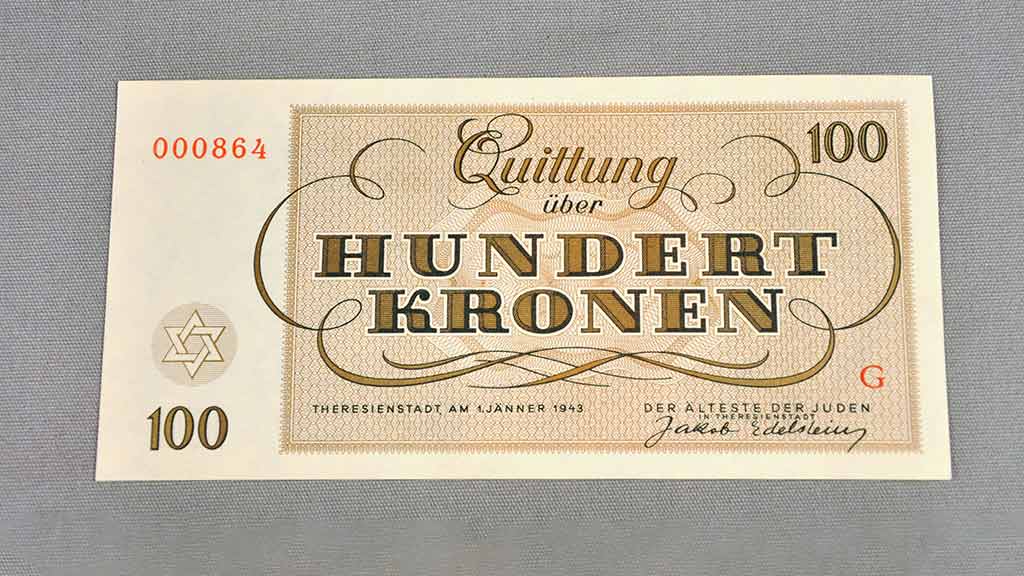
Featured Collection: Theresienstadt Currency
- Post Date: 6/24/2016
- Author: Kelly Holem
- Reading Time: 6 minute read
Of the more than 300 concentration camps established during Hitler’s Nazi regime, Theresienstadt is the only camp that had its own bank system. This collection from the "Bank der judischen Selbstverwaltung", or "Bank of the Jewish Self-Government", features banknotes that served as ‘receipts’ for Kronen (crowns being the currency of Czechoslovakia). Our collection features receipts ranging from 1 Krone to 100 Kronen. While it is overall accepted that the banking system was a ploy to demonstrate the civility of the Theresienstadt ghetto, the validity of the banking system is still somewhat contested. Some researchers conclude that the banknotes served no actual function while survivor accounts indicate that they used the currency to buy goods.
The banknote’s design was commissioned to ghetto inmate Petr Kien, a talented artist and writer, who was also responsible for drawing pictures of camp life that were sent back to Germany with monthly reports. The notes feature a drawing of Moses holding the Ten Commandments tablets written in Hebrew. Reinhold Heydrich, the first head of Reich security, rejected Kien’s original design because Moses appeared to be too Aryan. Some sources indicate Heydrich requested that the “Thou shall not kill” commandment not be visible, which changes the traditional order of commandments in the picture.
The currency was printed at the Prague National Bank and shipped to the camp in April 1943. The director of the bank was Dr. Desider Friedmann, a well-known Jewish lawyer and inmate, who the Nazis hoped would convince the general public of the system’s legitimacy. The notes are signed by Jacob Edelstein under the title “Alteste der Juden” (Elder of the Jews). The Altestenrat (Council of Elders) was formed with the camp’s establishment in 1941 as a type of self-governance. Edelestein served as the camp elder until the Nazis appointed two more men to lead the council as a triumvirate. He was eventually deported to Auschwitz in December of 1943.
Theresienstadt
Theresienstadt was founded in 1941 in the town of Terezín, Czechoslovakia under Heydrich’s direction. The town was converted to a ghetto intended for German Jews. Although Theresienstadt was established as a ghetto, it is also referred to as a camp due to its role as a point of transit for Jews being sent to extermination centers in the East.
The new ghetto was labeled in Nazi propaganda as a retirement settlement, or reward, for Jews who met a certain criteria. The first residents included Jews who had previously served Germany in the First World War and their families, as well as prominent Jews whose disappearances would be noticed by the public. These first residents thought Theresienstadt sounded like a good idea and welcomed their move eastward as an alternative to the death camps rumored about elsewhere.
Soon thereafter, the strict criteria for entering the ghetto loosened and Jews from Austria, Denmark, Luxembourg, and the Sudetenland were transported to the town in the summer of 1942. That same year began the transportation of residents for extermination at Auschwitz. Although there were no gas chambers at Theresienstadt, a crematorium was eventually built on-site to take care of the accumulating number of bodies resulting from deaths within the camp.
The decision to create a ghetto currency was made in the fall of 1942 when the International Red Cross launched an investigation, at the request of the Danish government, to see the conditions of the camp. After some hesitation, Hitler agreed to present Theresienstadt as a “model” Jewish city. This decision sparked an overall beautification of the camp. Changes that accompanied the implementation of the bank included massive deportations to cut down on the ghetto’s population, the building of stores, schools, a coffee house, and the planting of flowers throughout the streets. The commission arrived June 23, 1944, and left after a brief, superficial inspection. The visitors were satisfied with the facilities but overlooked details such as lack of running water in the newly-built bath houses.
Of the approximately 140,000 Jews who passed through Theresienstadt, about 90,000 were deported for extermination. An additional 33,000 died in camp due to harsh treatment, terrible living conditions, and poor health. Theresienstadt is known now for its unusual cultural life: religious practice was permitted and there were organized lectures and classes, a functioning lending library, and theatrical and musical compositions and performances.
-
- Share:
- Subscribe to Newletter
- Giving
